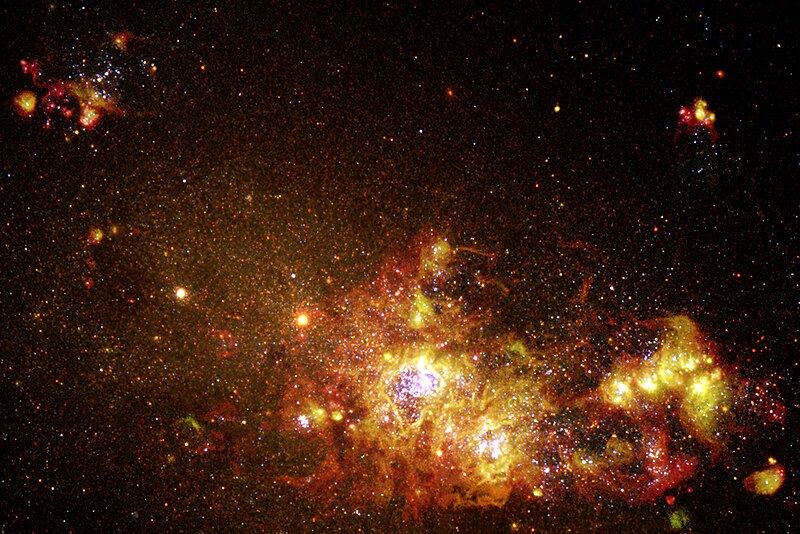Fișier:Fireworks of Star Formation Light Up a Galaxy - GPN-2000-000877.jpg

Mărimea acestei previzualizări: 800 × 534 pixeli. Alte rezoluții: 320 × 214 pixeli | 640 × 427 pixeli | 1.024 × 683 pixeli | 1.280 × 854 pixeli | 1.596 × 1.065 pixeli.
Mărește rezoluția imaginii (1.596 × 1.065 pixeli, mărime fișier: 1,67 MB, tip MIME: image/jpeg)
Istoricul fișierului
Apăsați pe Data și ora pentru a vedea versiunea trimisă atunci.
| Data și ora | Miniatură | Dimensiuni | Utilizator | Comentariu | |
|---|---|---|---|---|---|
| actuală | 9 aprilie 2009 03:41 |  | 1.596x1.065 (1,67 MB) | BotMultichillT | {{Information |Description={{en|1=Located some 13 million light-years from Earth, NGC 4214 is currently forming clusters of new stars from its interstellar gas and dust. In this Hubble image, we can see a sequence of steps in the formation and evolution o |
Utilizarea fișierului
Următoarele pagini conțin această imagine:
Utilizarea globală a fișierului
Următoarele alte proiecte wiki folosesc acest fișier:
- Utilizare la af.wikipedia.org
- Utilizare la ar.wikipedia.org
- Utilizare la ast.wikipedia.org
- Utilizare la el.wikipedia.org
- Utilizare la en.wikipedia.org
- Utilizare la es.wikipedia.org
- Utilizare la eu.wikipedia.org
- Utilizare la fr.wikipedia.org
- Utilizare la hr.wikipedia.org
- Utilizare la id.wikipedia.org
- Utilizare la it.wikipedia.org
- Utilizare la ja.wikipedia.org
- Utilizare la ko.wikipedia.org
- Utilizare la lb.wikipedia.org
- Utilizare la mk.wikipedia.org
- Utilizare la nl.wikipedia.org
- Utilizare la no.wikipedia.org
- Utilizare la pl.wikipedia.org
- Utilizare la pt.wikipedia.org
- Utilizare la si.wikipedia.org
- Utilizare la sk.wikipedia.org
- Utilizare la sr.wikipedia.org
- Utilizare la tr.wikipedia.org
- Utilizare la uk.wikipedia.org
- Utilizare la vi.wikipedia.org

